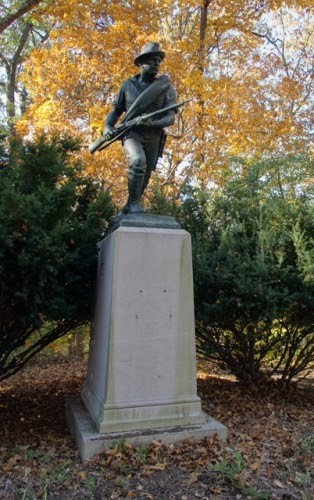First Women Students at Yale
- December 11, 2019
By Austin Farb
For over a century, the Yale School of Medicine only accepted male students from its opening in 1813. It was not until 1916, that the first female students were admitted as well. Part of the reason was due to World War I, which reduced the number of qualified students to be admitted to Yale’s School of Medicine. Another reason women were admitted was because of Henry Farnam, who at the time was an economics professor at Yale. Henry Farnam’s daughter Louise, wanted to attend medical school but was disqualified based on her gender. Farnam responded to the situation by discussing the matter at multiple board meetings and by sending a letter to Yale President Arthur T. Hadley. In this letter, Farnam stated, "Word has reached me informally that the faculty of the Medical School are willing to admit a limited number of women provided they are graduates of a college and provided funds can be raised to put in a suitable lavatory. As the latter condition seems to be considered a serious one, I write to say that… I shall be glad to be responsible for meeting the expenses of suitable lavatory arrangements”. Farnam ended up paying what was said to be around $1,000 and the Yale Corporation ended up voting to accept women into the Yale School of Medicine in the summer of 1916.
The initial statement released to the public stating that women would be admitted to the School of Medicine came out in Yale’s 1917 school bulletin. This bulletin stated, “A limited number of graduates of recognized colleges for women who can meet the special requirements in the sciences and language will be admitted to the school of medicine”. Yale was very specific with the type of female students they would accept and only allowed a select few citing to budgetary and financial issues. There were only three women that were admitted in 1916 named to enter the class of 1920. One of these women was Louise Farnam, Farnam and Helen May Scoville graduated with seventeen other men in 1920. Lillian Lydia Nye, who was one of the three women admitted in 1916, ended up leaving Yale and earned her medical degree from John Hopkins University. John Hopkins School of Medicine was a model in which Yale had aspired to be and had even admitted women from its grand opening in 1983. Yale’s School of Medicine would slowly grow into what it is today, the number of women graduating from the Yale School of Medicine would continue to fluctuate around five percent of the class for decades.
Shortly after women were admitted to the Yale School of Medicine, New Haven Hospital and Yale began a residency program. Women began serving as residents in 1919 with an initial number of four women in the program. These four women were Louise Farnam, Margaret Tyler, Isabel Mary Wason, and Ethel Dunham. They were the earliest female graduates of the 1920s and 1930s. Most women medical graduates were married and had children which greatly affected their ability to maintain a full-time medical career. Throughout the 1920s and 1930s, many male graduates from the Yale School of Medicine ended up becoming professors at Yale which was not an option for the women graduates.
Louise Farnam, who played an important role in the admission of women into the Yale School of Medicine, graduated at the top of her class and received the Campbell Gold Medal for achieving the highest rank in examinations. A year after graduating in the class of 1920, Farnam became the first women faculty member at Yale. She continued to use her experience to teach students and even replace service doctors in England when they were called into military service during World War II. Helen Scoville, another female graduate from the class of 1920, worked as a laboratory assistant in experimental medicine while still a medical student. Scoville continued her education by joining the Department of Pathology at Yale under Milton Winternitz in the same year. From 1922 to 1929, Scoville held the rank of instructor in surgery and pathology while still working with Winternitz. After some time, Scoville struggled to find work along with many other women in this field, which brought her to Pittsfield, Massachusetts. Scoville ultimately worked as a pathologist in a smaller hospital where women were needed and more likely to be accepted.
In 1923, the Yale School of Nursing was opened. Headed by Dean Annie Goodrich, this was the first university school of nursing in the entire country. The school’s goal was to train women with a bachelor’s degree with the intention to become nurses in New Haven and around the state. The Yale School of Nursing ended up replacing the Connecticut Training School for Nurses as well. Yale became a pioneer in integrating women into higher education and in medicine more particularly. This was a slow but significant evolution.
Henry Farnam
Louise Farnam
1917 Yale Bulletin
Bibliography
“Helen Robertson (Howe) Gage.” Yale School of Medicine, medicine.yale.edu/profile/115819/.
“Los Angeles Herald, Volume 37, Number 265, 23 June 1910.” Los Angeles Herald 23 June 1910 - ccccccCalifornia Digital Newspaper Collection, gggggcdnc.ucr.edu/?cccccca=d&d=LAH19100623.2.14&e=-------en--20--1--txt-txIN--------1.
“Resources on Yale History: A Brief History of Yale.” Yale University Library Research ggggggGuides, guides.library.yale.edu/yalehistory.
“Women Students Arrive at Yale School of Medicine and the Hospital.” Omeka RSS, gggggexhibits.library.yale.edu/exhibits/show/100-years-women-ysm/women-students-arrive-at-ccccccyale-.






Comments
Post a Comment